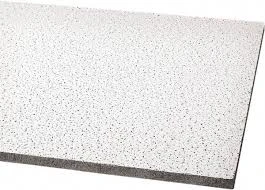- Afrikaans
- Albanian
- Amharic
- Arabic
- Armenian
- Azerbaijani
- Basque
- Belarusian
- Bengali
- Bosnian
- Bulgarian
- Catalan
- Cebuano
- Corsican
- Croatian
- Czech
- Danish
- Dutch
- English
- Esperanto
- Estonian
- French
- German
- Greek
- Hindi
- Indonesian
- irish
- Italian
- Japanese
- Korean
- Lao
- Malay
- Myanmar
- Norwegian
- Norwegian
- Polish
- Portuguese
- Romanian
- Russian
- Serbian
- Spanish
- Swedish
- Thai
- Turkish
- Ukrainian
- Uzbek
- Vietnamese
Th11 . 05, 2024 10:41 Back to list
mineral tile ceiling
Mineral tile ceilings have become increasingly popular in both commercial and residential settings due to their numerous advantages. Composed primarily of mineral fiber, these tiles provide an effective solution for various architectural and acoustic needs, making them a top choice among designers and builders.
One of the primary benefits of mineral tile ceilings is their exceptional sound-absorbing capabilities. The porous structure of the mineral fibers allows these tiles to dampen sound, reducing echo and improving overall acoustics in a room. This attribute is particularly advantageous in environments like offices, schools, and restaurants, where clear communication is essential and noise levels can be challenging. By installing mineral tile ceilings, spaces can feel more comfortable and productive, catering to the needs of their occupants.
In addition to their acoustic benefits, mineral tile ceilings are also fire-resistant. The inorganic nature of the materials used makes them inherently non-combustible, a critical feature for ensuring safety in any building. Many building codes require fire-rated materials in commercial spaces, and mineral tiles meet these guidelines effectively. This characteristic not only contributes to the safety of a building but also gives peace of mind to its occupants.
Aesthetically, mineral tile ceilings offer a variety of design options that can suit different tastes and styles. Available in a range of textures, colors, and patterns, these tiles can easily complement any interior design. They can transform a plain ceiling into a visual focal point, contributing to the overall ambiance of the space. Whether you prefer a sleek, modern look or a more traditional appearance, there is likely a mineral tile option that fits your vision.
mineral tile ceiling

Moreover, installation and maintenance of mineral tile ceilings are relatively straightforward. They can be installed in standard grid systems, making the process efficient and cost-effective. Additionally, if damage occurs, individual tiles can be replaced without the need for extensive renovations. Regular maintenance often involves simple cleaning, as these tiles repel dust and dirt, keeping spaces looking fresh and sophisticated.
Another critical aspect of mineral tile ceilings is their sustainability. Many manufacturers are now producing mineral tiles using recycled materials, which helps to reduce waste and promote eco-friendly building practices. This emphasis on sustainability aligns with the growing trend of environmentally conscious construction, making mineral tile ceilings not only a functional choice but also a responsible one.
In conclusion, mineral tile ceilings are a versatile option that combines aesthetic appeal, acoustic performance, fire safety, and ease of maintenance. Whether in a bustling office space, a quiet classroom, or a chic restaurant, these ceiling tiles can enhance the environment, promoting better communication and comfort. As building practices evolve, the adoption of mineral tile ceilings is likely to continue expanding, reaffirming their position as a preferred choice in architectural design.
-
Transform Interiors with PVC Gypsum Ceiling: A Stylish, Durable, and Moisture-Resistant SolutionNewsMay.19,2025
-
The Smart Interior Upgrade: Discover the Durability and Versatility of Gypsum Ceiling Access Panel SolutionsNewsMay.19,2025
-
The Smart Choice for Interior Design: Discover the Value of PVC Gypsum Ceiling SolutionsNewsMay.19,2025
-
Mineral Fiber Ceiling Tiles: The Smart Blend of Performance and AestheticsNewsMay.19,2025
-
Mineral Fiber Ceiling Tiles: The Superior Choice Over Gypsum for Sound and Fire SafetyNewsMay.19,2025
-
Mineral Fiber Ceiling Tiles: Eco-Friendly Strength and Style for Every CeilingNewsMay.19,2025







